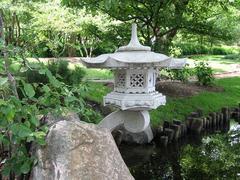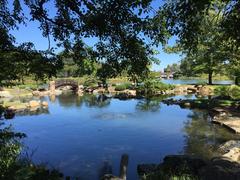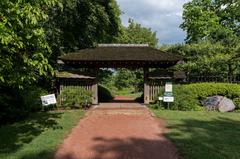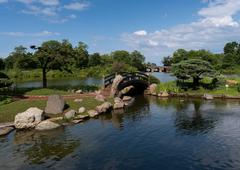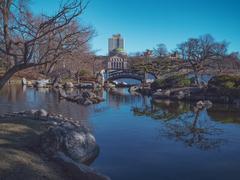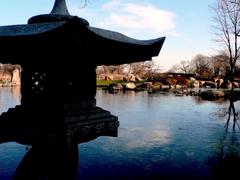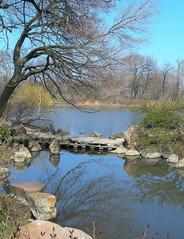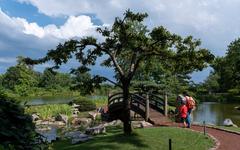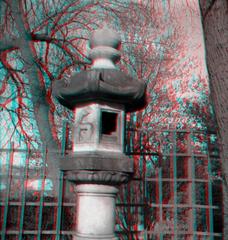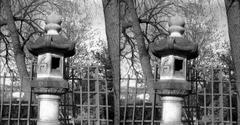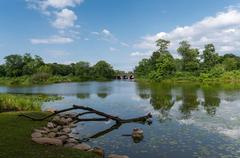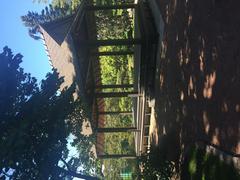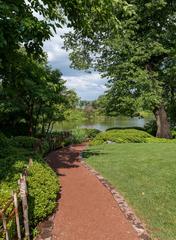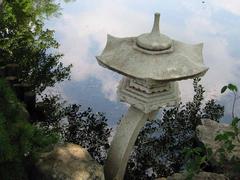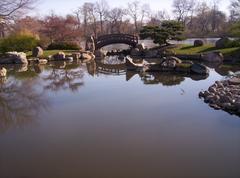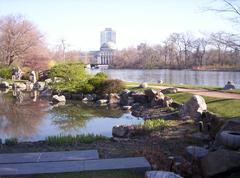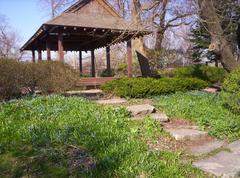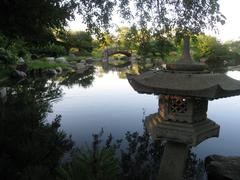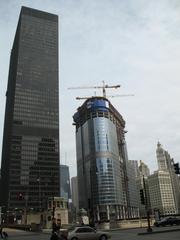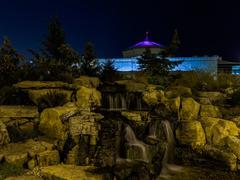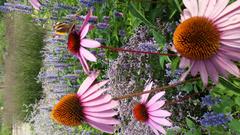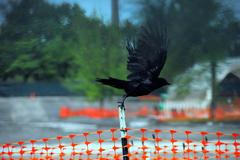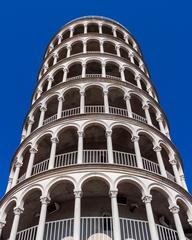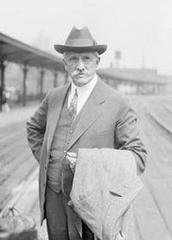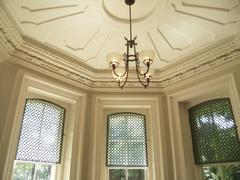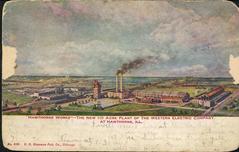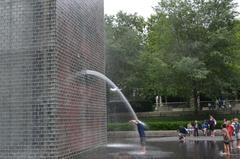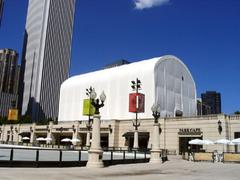
Visiting Garden of the Phoenix: Hours, Tickets, and Nearby Historical Sites in Chicago
Date: 24/07/2024
Introduction
The Garden of the Phoenix, also known as the Japanese Garden or Osaka Garden, is a hidden gem in Chicago’s Jackson Park that beautifully symbolizes the enduring friendship between the United States and Japan. Established initially as the Phoenix Pavilion during the 1893 World’s Columbian Exposition, this site has evolved into a serene oasis that offers visitors a rich cultural and ecological experience. The garden stands as a testament to historical resilience, having undergone multiple restorations and expansions, especially after significant challenges during and after World War II. Today, it celebrates a rich history of over 120 years, reflecting a perfect blend of traditional Japanese elements and modern artistic touches such as Yoko Ono’s Sky Landing sculpture. This comprehensive guide aims to provide valuable insights into the garden’s history, cultural significance, visitor information, and tips to make the most of your visit. Whether you are a history enthusiast, a nature lover, or simply looking for a tranquil escape, the Garden of the Phoenix offers something for everyone. (source, source).
Table of Contents
- Introduction
- History of the Garden of the Phoenix
- Visitor Information
- Cultural Significance
- Notable Features
- Frequently Asked Questions
- Conclusion
History of the Garden of the Phoenix
Origins and Early Development
The Garden of the Phoenix, originally known as the Ho-o-den or Phoenix Pavilion, has a storied history that dates back to the late 19th century. The pavilion was first introduced during the 1893 World’s Columbian Exposition in Chicago. Modeled after the Hōōdō, or Phoenix Hall, located in Uji, near Kyoto, the pavilion was a gift from the Japanese government to the City of Chicago. The Hōōdō, built in 1052, is one of the most significant examples of classical Japanese architecture (source).
On February 11, 1892, representatives of the Japanese Exhibition and South Park Commissioners concluded an agreement whereby Japan would build the Phoenix Pavilion and gift it to Chicago. The City of Chicago, through the South Park District (now the Chicago Park District), agreed to maintain the building permanently on the Wooded Island as a symbol of the relationship between the two countries and as a place for Americans to experience Japanese culture (source).
The 1930s Restoration and Expansion
In the 1930s, the Phoenix Pavilion underwent significant restoration and expansion. On July 27, 1935, the Chicago Park District opened a new Japanese garden to the public, coinciding with the arrival of Sadao Iiguchi, the newly appointed Consul General of Japan at Chicago. This garden included a Japanese tea house, lanterns, and a torii gate that had been part of Japan’s exhibit at the 1933 Century of Progress Exposition, Chicago’s second world’s fair (source).
During the final inspection of the buildings and garden before their public opening, the Japanese Consul remarked, “our people will always be grateful for what Chicago has done for this place. We revere this ground as a bit of our homeland transplanted in the heart of a great and friendly nation” (source).
Post-World War II and the Garden’s Decline
The Phoenix Pavilion and its accompanying garden faced significant challenges during and after World War II. The pavilion and garden were lost following the war, reflecting the strained relations between the United States and Japan during that period. Despite these difficulties, Chicago maintained its promises made to Japan in 1893. In 1934, at the height of the Great Depression, the United States launched the Public Works Administration as part of the New Deal to put Americans back to work. This initiative included funding improvements for Chicago’s parks, leading to the restoration of the Phoenix Pavilion and the addition of an authentic Japanese garden (source).
The Garden’s Rebirth and Modern Era
During the next 60 years (1953-2013), the United States and Japan worked hard to evolve from enemies in the Pacific to global allies. While the focus remained on peace between nations and economic prosperity, citizens in both countries broadened their cooperation to include how to live and grow together with our planet. Today, the Japanese garden on the Wooded Island embarks on the next phase in its illustrious history, celebrating its one-hundred and twenty-year history and rebirth as the “Garden of the Phoenix” (source).
Visitor Information
Visiting Hours and Tickets
The Garden of the Phoenix is open year-round, offering visitors a serene escape in every season. There are no entrance fees, making it an accessible attraction for all. However, it’s advisable to check the Chicago Park District’s official website for any updates on opening hours and potential closures.
How to Get There
Visitors to the Garden of the Phoenix can access the isle via the Clarence Darrow Bridge, located near the Museum of Science & Industry. However, the bridge is often under repair, requiring visitors to walk three-quarters of a mile southeast through the Bobolink Meadow and around the East Lagoon to reach the isle’s other bridge. The garden offers tranquil footpaths, wading blue herons, and a serene environment that feels worlds away from the city (source).
Nearby Attractions
The Garden of the Phoenix is located in Jackson Park, a large urban park that also houses the Museum of Science and Industry. The nearby Bobolink Meadow is another peaceful spot for nature lovers. Hyde Park, where Jackson Park is located, offers various dining and shopping options.
Accessibility
While the garden is accessible to all, the condition of the Clarence Darrow Bridge may affect accessibility for those with mobility issues. It’s recommended to check for the latest updates on bridge repairs and alternative routes before planning your visit.
Special Events and Guided Tours
The Garden of the Phoenix occasionally hosts special events and guided tours, which are great opportunities to learn more about its history and cultural significance. Check the Chicago Park District’s website for upcoming events and tour schedules.
Cultural Significance
The Garden of the Phoenix stands as one of the most important American sites that link the past and future of U.S.-Japan relations. It serves as a place for Americans to experience Japanese culture and for nature to flourish. The garden’s history reflects the enduring friendship between the United States and Japan, showcasing the greatest achievements of Japan’s artistic heritage and transforming visitors’ understanding and appreciation of Japan and its people (source).
Notable Features
The garden features Yoko Ono’s sculpture Sky Landing, comprised of 12 large steel lotus petals, adding a modern artistic touch to the traditional landscape. The garden is also home to stone-cut lanterns and other traditional Japanese elements, creating an exotic and peaceful environment for visitors (source).
Frequently Asked Questions
Q: What are the visiting hours for the Garden of the Phoenix? A: The garden is open year-round. It’s best to check the Chicago Park District’s website for the most current information.
Q: Is there an entrance fee? A: No, the Garden of the Phoenix is free to visit.
Q: How can I get to the garden? A: The garden can be accessed via the Clarence Darrow Bridge near the Museum of Science & Industry. If the bridge is under repair, another route through the Bobolink Meadow and around the East Lagoon is available.
Q: Are there any special events or guided tours? A: Yes, the garden occasionally hosts special events and guided tours. Check the Chicago Park District’s website for more details.
Q: What are some nearby attractions? A: The garden is located in Jackson Park, which also houses the Museum of Science and Industry. The Bobolink Meadow and Hyde Park are also nearby.
Conclusion
The Garden of the Phoenix in Chicago’s Jackson Park is more than just a beautiful landscape; it is a living symbol of the enduring friendship between the United States and Japan. From its origins in the late 19th century to its modern-day significance, the garden has continually evolved while preserving its cultural heritage. Open year-round and free to the public, it offers a tranquil retreat that can be enjoyed in every season. The garden not only provides a peaceful environment for reflection and leisure but also serves as an important cultural landmark. Whether you’re visiting for the cherry blossoms in spring, the lush greenery of summer, the vibrant fall colors, or the serene winter landscape, the Garden of the Phoenix promises a memorable and enriching experience. Don’t miss the chance to explore this hidden gem, participate in special cultural events, and capture stunning photographs. Plan your visit today and immerse yourself in the rich history and natural beauty of one of Chicago’s most treasured sites. (source, source).
